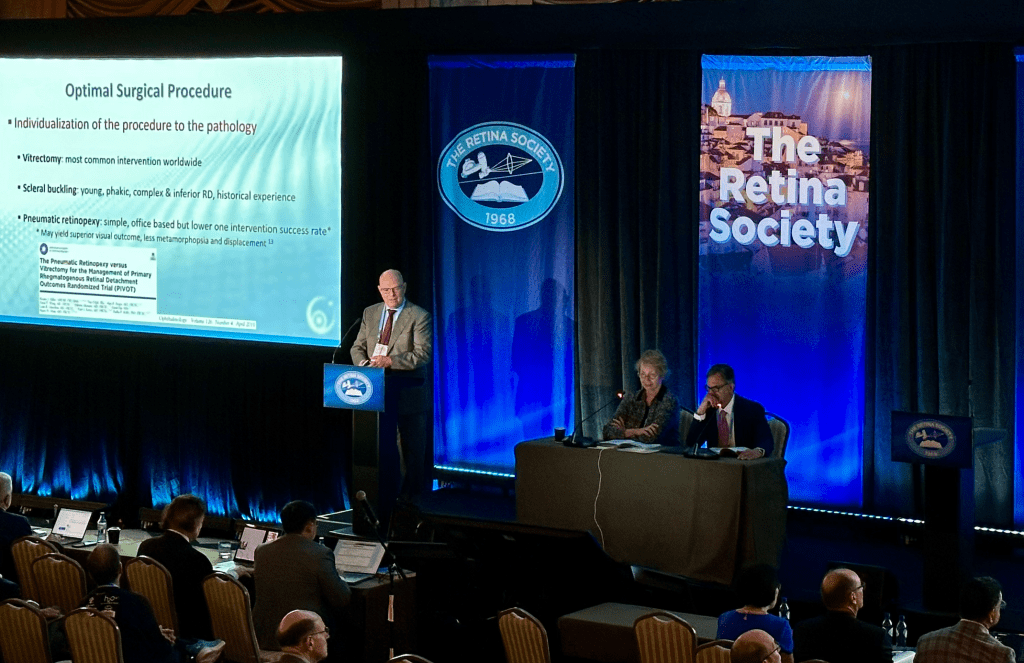Michael Yu, MD
Wills Eye Hospital, Philadelphia, PA
Thursday morning’s Surgery 1 session was moderated by Drs. Jeffrey Heier and Cynthia Toth. Several notable talks are summarized below.

Dr. Geoff Williams of the University of Rochester presented a prospective study randomized study evaluating macular splints in the setting of retinal detachment repair. Macular splinting involves preoperative gas injections and face-down positioning prior to vitrectomy for retinal detachment repair with the goal of temporizing a retinal detachment prior to surgical intervention. Ideally, the preoperative gas injection flattens the macula and minimizes the amount of time the macula is detached preoperatively. In the study, 30 patients with acute and subacute macula-off rhegmatogenous retinal detachments were randomized to receive either preoperative gas with facedown positioning (n=15) or no preoperative gas (n=15). Over 80% of patients receiving preoperative gas exhibited macular reattachment by the time of surgery, which correlated with reduced heavy perfluorocarbon liquid use and a less bullous detachment that made surgery easier. Notably, visual outcomes and surgical success data were not evaluated.
![]()
Dr. Rajeev Muni of the University of Toronto described a novel in-office technique to treat acute rhegmatogenous retinal detachments using suprachoroidal viscopexy. The idea is that a suprachoroidal injection of viscoelastic material can create a depression that reopposes the retina, allowing for laser retinopexy to be performed. The concept is akin to the Lincoff-Kreissig balloon for retinal detachment repair. The main purported benefit of Dr. Muni’s technique that there is no associated positioning required, eliminating the need for patient compliance. Additionally, there are no altitude restrictions given the absence of a gas bubble. The technique entails the use of a 30-gauge needle. The hub of the needle is placed in the clock hour corresponding to the peripheral pathology. The depression bump from the hub is visualized using the indirect ophthalmoscope to confirm proper placement. Once confirmed, 0.6 cc of Healon is then injected slowly into the suprachoroidal space to reoppose the retina. This is followed by laser retinopexy. Dr. Muni showed six cases that were successfully treated with viscopexy with a mean follow-up of 10 months.
![]()
Dr. Jason Hsu of Wills Eye Hospital presented retrospective single-center data on the incidence and outcomes of retinal detachment after vitrectomy and subretinal tissue plasminogen activator (tPA) injection for submacular hemorrhage. A total of 167 eyes were included in the study, and of these, 15 eyes (9%) developed subsequent rhegmatogenous retinal detachment (RRD), typically within 6 weeks of the initial surgery. Most cases were macula-involving (80%) with high rates of proliferative vitreoretinopathy (PVR, 60%). The severity of the PVR was such that only 70% of RRD eyes achieved single surgical anatomical success and 50% required silicone oil tamponade by the final visit.